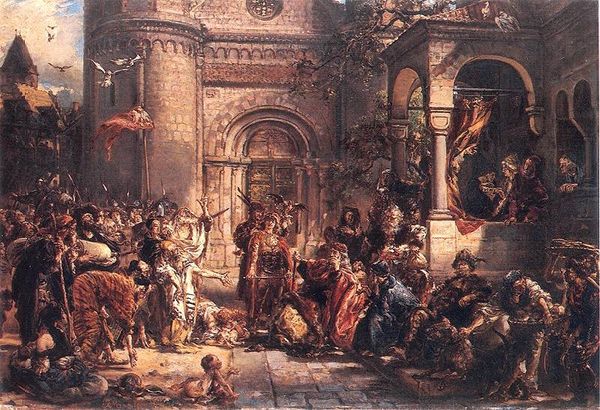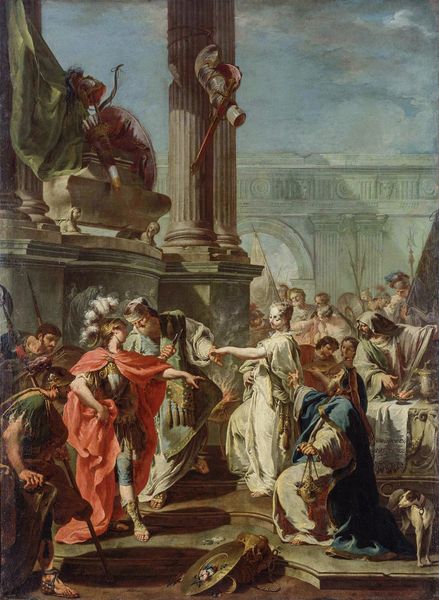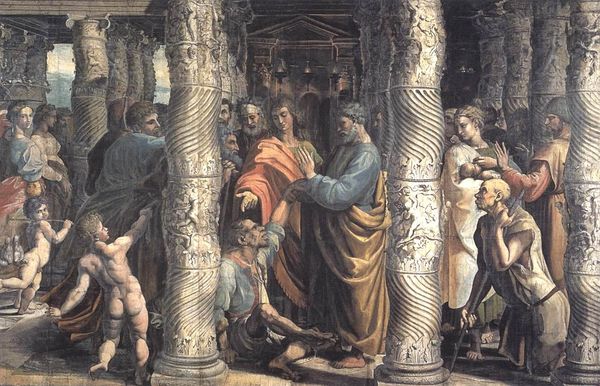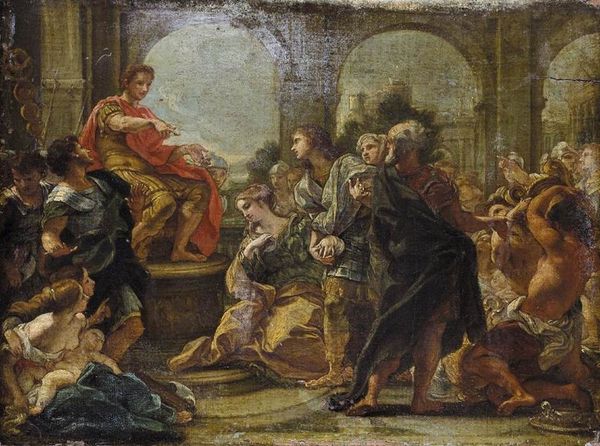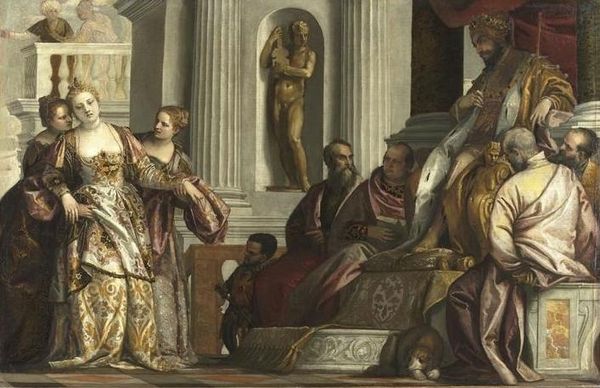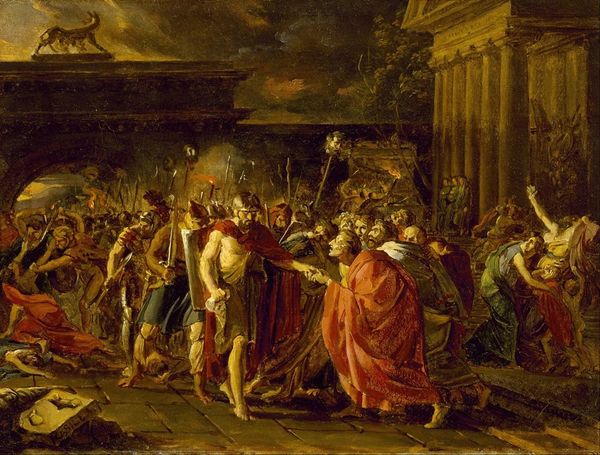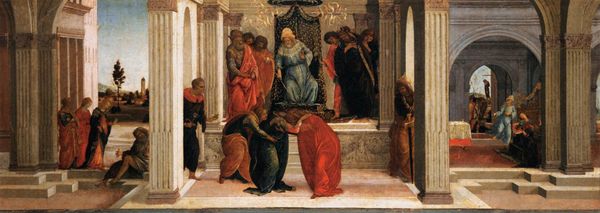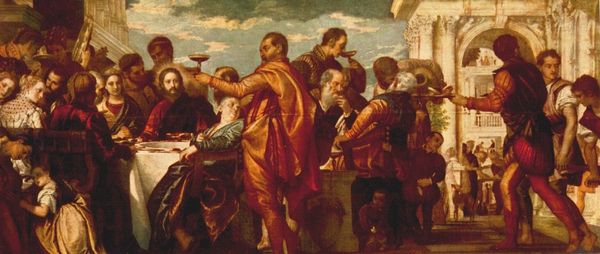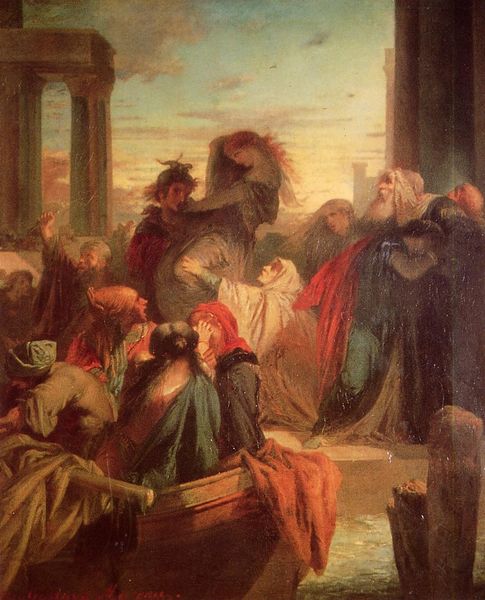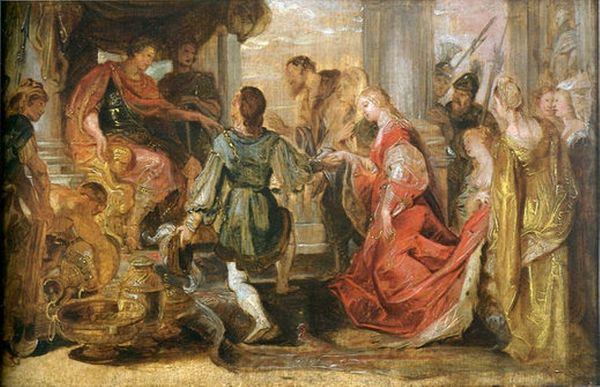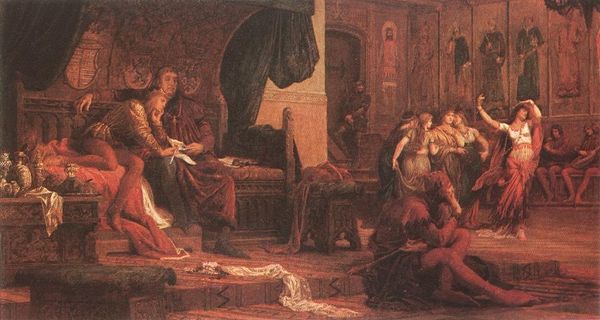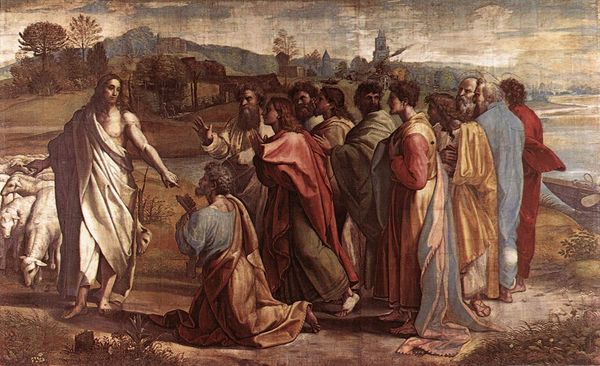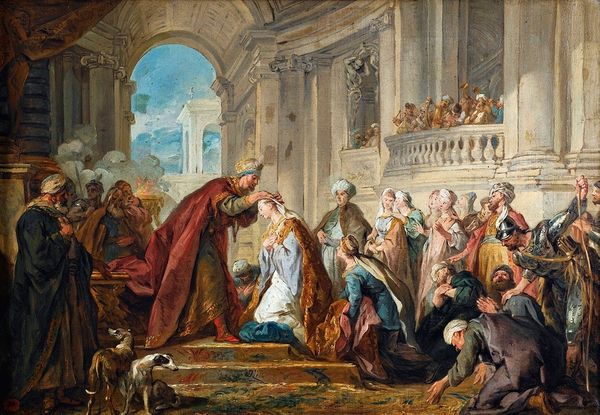
painting, oil-paint
#
portrait
#
baroque
#
painting
#
oil-paint
#
figuration
#
jesus-christ
#
christianity
#
genre-painting
#
history-painting
Dimensions: 16 x 25 cm
Copyright: Public domain
Curator: Here we have Joachim Wtewael's "The Tribute Money," painted in 1616. It depicts a scene from the Gospels where Jesus is questioned about the lawfulness of paying taxes to Caesar. Editor: My first impression? Chaos. Controlled chaos, but definitely a crowded stage. And that light, oh, it just grabs you, pulling you right into the debate, almost like you're shoulder-to-shoulder with those figures in the crowd. Curator: Indeed. Wtewael, known for his Mannerist style evolving into Baroque, meticulously layers oil paints to build a sense of volume, and I agree, his light does highlight certain tensions in the scene. But it’s also about the social dynamics, isn't it? The demand for coinage represents economic pressures, while Jesus’ response involves moral authority. He says, “Render therefore unto Caesar the things which are Caesar's; and unto God the things that are God's.” Editor: Right, there is this interesting contrast. It’s like watching a play where the costumes, the setting—those columns looming in the background—speak volumes about power and status. But then you've got Jesus, seemingly calm amid this storm of tax collectors and skeptics. Curator: And consider Wtewael's patrons. Commissioning such works solidified their own positions and highlighted religious and moral stances, legitimizing social hierarchies of the period. Materials also factor into this equation—high quality oil paints signaled wealth and taste. The support for religious artwork provided economic stimulation as workshops flourished due to commissioned works for affluent people. Editor: Absolutely. There's a sense of deliberate theater to the whole piece. You're invited to be not just a viewer, but a participant. And as an artist, what interests me are the material decisions that help him craft this story – how he chooses certain colors to signal moods. That orange-red is fantastic. Curator: Exactly. The careful rendering of fabrics also shows both the painter's skill and the prosperity of the portrayed people. The material object, beyond religious value, signaled consumerism during this era in the Netherlands. Editor: Well, diving into this painting has felt like cracking open a time capsule of faith, society, and, let's not forget, remarkable artistry. Curator: It highlights the complex entanglement between commerce and religious interpretation in 17th-century life. Examining historical artworks in light of social factors provides insights not always apparent in art-historical canon.
Comments
No comments
Be the first to comment and join the conversation on the ultimate creative platform.

